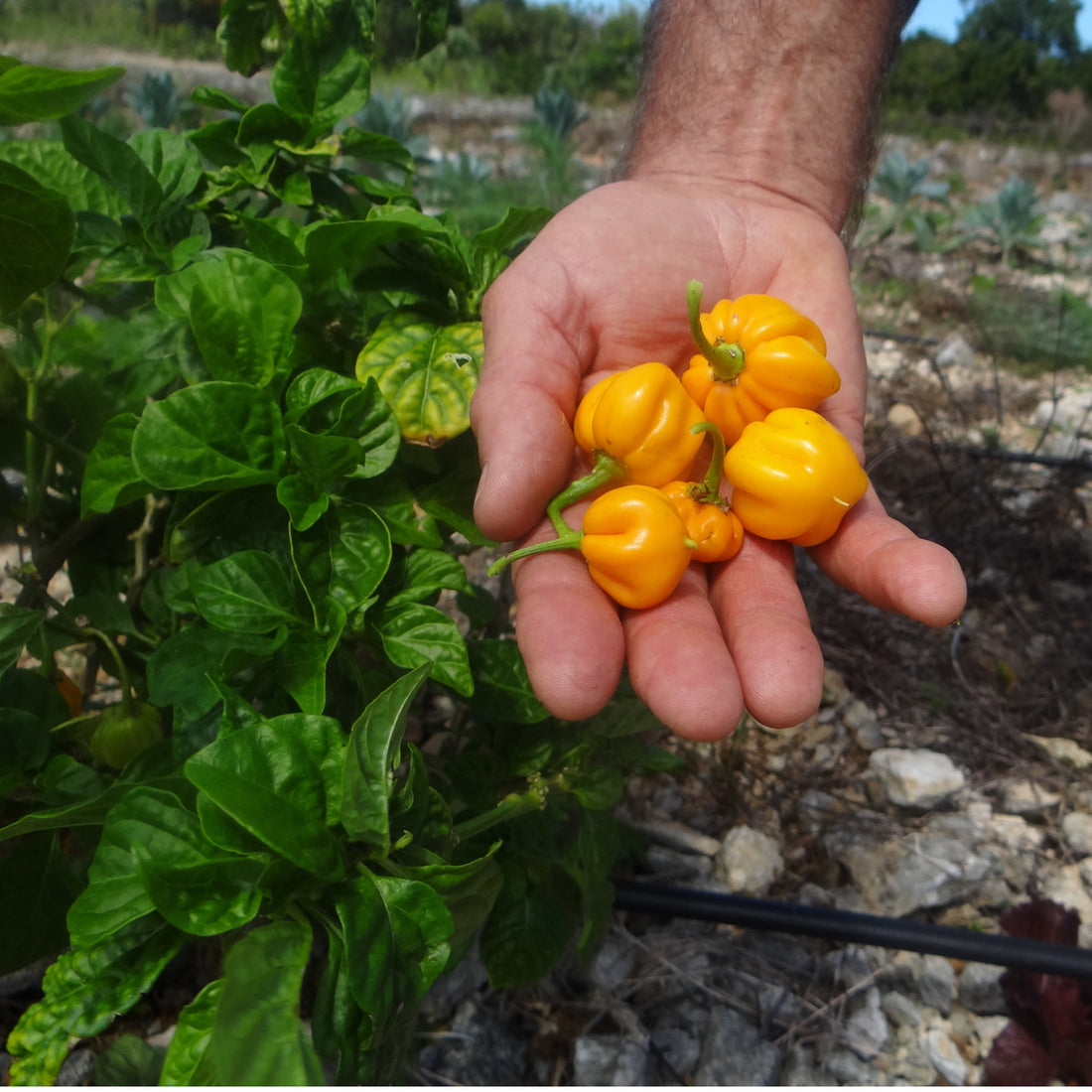
Know What You Eat: Deciphering the Colors of Heirlooms
Share
Heirloom crops can be found in an array of various colors and shapes that differ from the more popular, standard varieties seen in the grocery store. The different colors in heirloom vegetables indicate the different nutrients in their skins. Purple carrots, speckled lettuce, black tomatoes, gold beets, and even red lettuce make for a salad bursting with color and nutrients that regular “greens” would not be able to provide. It is for this reason that heirloom food is also considered more nutritious than commercial crops. You can know what nutrients you will be eating by deciphering the colors of your heirlooms,
- Blue and purple fruits and vegetables;contain the antioxidants Lutein, Zeazanthin, Resveratrol, Vitamin C, Fiber, Flavonoids, Ellagic Acid, and Quercetin. These antioxidants work to slow and reverse the aging process, improve urinary tract function, increase memory, and reduce the risk of many types of cancers. They also improve vision, lower LDL cholesterol, encourage regular digestion, reduce the growth of tumors and limit cancer cells, boost the immune system, and reduce inflammation throughout the body. Examples of blue and purple produce include blueberries, plums, purple asparagus, purple carrots, purple-fleshed sweet potatoes, and purple cabbage.
- Green produce; contain Chlorophyll, Fiber, Lutein, Zeaxanthin, Calcium, Folate, Vitamin C, and Beta-carotene. These nutrients work to promote healthy vision and strong bones and teeth. They also reduce the risk of developing cancer, lower LDL cholesterol levels and blood pressure, regulate metabolism, and boost the immune system. Examples of green fruits and vegetables include avocados, broccoli, Brussels sprout, leeks, spinach, green pears, and artichokes.
- White, tan, and brown vegetables; known to contain the antioxidants Allicin, Beta-glucans, Epigallocatechin Gallate, and Lignans that boost your immune system. White produce reduces the risk of developing colon, breast, and prostate cancers. It also balances hormone levels, as well as helps to lower cholesterol levels and reduce the chance of developing heart disease. Garlic, onion, white nectarines, bananas, pears, white peaches, ginger, Jerusalem artichokes, mushrooms, and white corn are just a few examples.
- Yellow and orange fruits and vegetables; contain high doses of Vitamin C, Vitamin A, Zeaxanthin, Bioflavoids, Flavonoids, Lycopene, and Potassium. These vitamins and antioxidants boost the immune system, lower your risk of developing cancer, improve your vision, and reduces your risk of heart disease by lowering LDL cholesterol levels. Yellow and orange produce also is known to promote healthy joints, support a healthy alkaline balance, and build strong bones. Apricots, yellow pears, yellow watermelon, mangos, grapefruits, carrots, pumpkins, yellow tomatoes and sweet corn are just a few examples of these health essential fruits and vegetables.
- Red produce; known to contain Lycopene, Ellagic Acid, Quercetin, Hesperidin, and Anthocyanins, red fruits and veggies work to prevent cancer, lower blood pressure and LDL cholesterol levels thus reducing the risk of developing heart disease. Red fruits and vegetables also improve urinary tract function, prevent and reduce arthritis, and improve memory. Red apples, red lettuce, strawberries, watermelon, red peppers, tomatoes, rhubarb, and cherries are some examples of this type of healthy and delicious red produce.